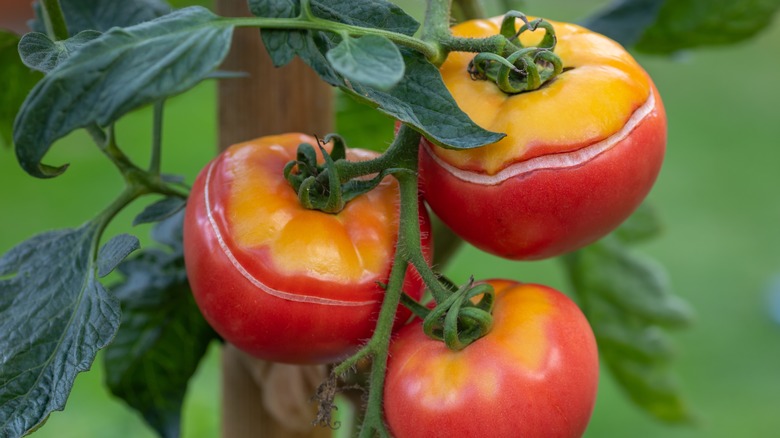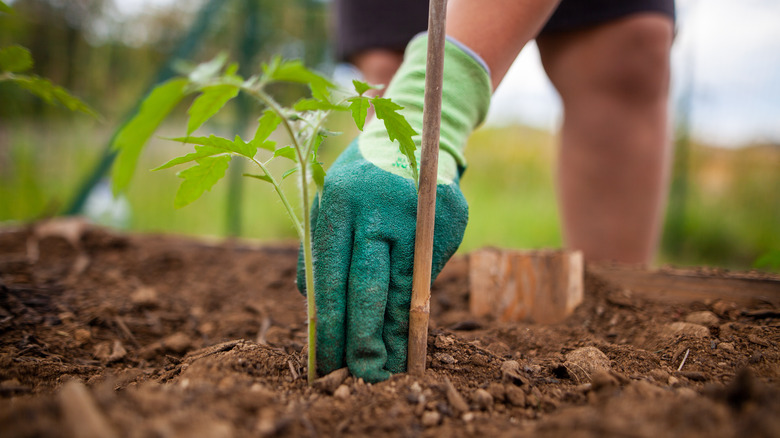How To Prevent Split Tomatoes In Your Garden
Gardening sounds like a simple, wholesome way to get back to the earth and connect with your food — but those who've spent any time in a backyard veggie patch know the undertaking can be fraught. Mastering the perfect blend of soil nutrients, warding off a barrage of pests and disease, and choosing the right crops for your climate are just some of the hurdles (so don't think gardening's a set it and forget it hobby — a common rookie mistake).
When trying to master the art of growing everyone's favorite warm weather crops to grow — tomatoes — one all-too-common pitfall is fruit ruined by cracks and splits through the flesh — inviting in spoilage and garden critters alike. You should pick them once you spot a crack, since they're usually still perfectly edible. Deanna Talerico, creator of Homestead and Chill, a popular lifestyle site with advice on all things gardening, growing, and living off the land, explains splits occur due to inconsistencies in watering — whether by hand or from unpredictable rainfall. So, doing what you can to reduce moisture fluctuations is key.
"While we can't control the weather, gardeners can try their best to develop a regular watering routine that keeps their tomato soil evenly damp instead of yo-yoing between soggy and dry," she advises. Don't be stingy with watering though — your best bet is to water tomatoes "deeply and less frequently (e.g., every few days but for a longer period of time, rather than a small bit of water daily)" for your best shot at unblemished round fruit.
Go on the offense, before planting your tomatoes
The further into the gardening journey you get, the more it's apparent there are no simple fixes or magic solutions. While you can play defensively, scattering fertilizers and spraying pesticides as problems arise, the best gardens come from a holistic understanding of how all components work symbiotically — from the soil to the critters in your garden and your planting schedule.
While steady watering patterns are key (bonus points: give your plants an extra boost by watering with leftover cooking water), the soil they're planted in is equally vital. Deanna Talerico says to always ensure tomatoes are in soil that has both good drainage and good moisture retention properties. Stick plants in poor quality soil and regardless of watering habits, splitting is likely if soil becomes easily waterlogged and can't drain, or quickly dries up. To set baby plants up for success, Talerico advises pairing good quality soil with organic matter and/or compost (balance is key, she reminds).
Finally, if you've done all you can to amend your soil and create the healthiest, happiest home for your tomatoes, but are still worried about splitting — go on the offense and plant specifically crack-resistance varieties, and easy to grow species like cherry tomatoes. Finally, halt cracks before they can start, by harvesting your crops early — while still green, Talerico says, and let tomatoes reach peak juicy ripeness from the safety of the kitchen counter.

